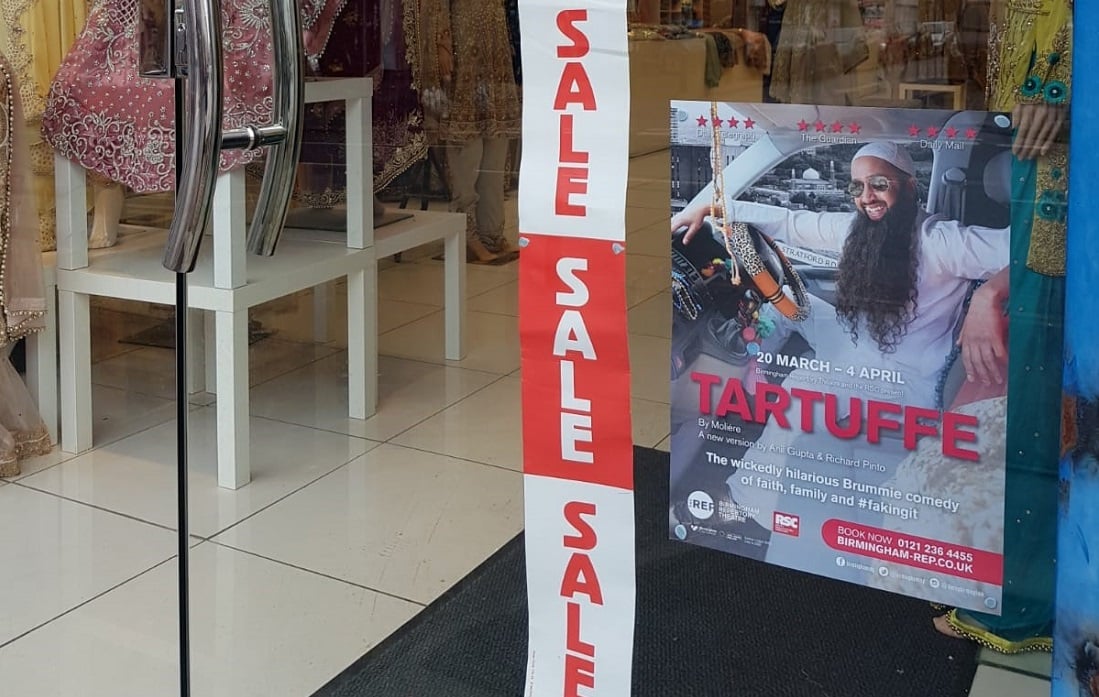
Community: the beating heart of a new arts landscape
Could an Ambassadors Scheme offer a way of better connecting theatres with their local communities? Hardish Virk has seen positive results in South Asian communities.
Since lockdown, social and economic inequalities have been significantly amplified, specifically in response to the Black Lives Matter movement and Public Health England’s report, Beyond the data: understanding the impact of COVID-19 on BAME groups.
Why community matters
The arts do not exist within a vacuum. They have more in common with community than many realise, as they are connected through people and their stories. Without community the arts live in a bubble, detached from reality in a parallel world.
Community is where there are homes, parks, businesses, schools, playgrounds, community centres, health provisions, spaces of sanctuary and places of faith. It is where friends and families meet and greet, laugh and play, converse and debate. It’s everything you can find in a theatre or an arts centre but it’s more real and relevant.
Systemic inequalities create a culture of marginalisation, negatively impacting on the health, education, social and career prospects of many communities. Ethnicity, birthplace, where you grow up and education all inform future opportunities – including the level of engagement with public funded arts provisions.
Until now, in many (not all) cases, community has been an afterthought or included as part of under-resourced audience development projects. This has meant a recycling of diversity programmes with limited to no power-sharing given to historically marginalised ‘diverse’ stakeholders. Thirty years’ experience in audience development and community engagement has taught me that nothing fundamentally changes and unless we take action we will have the same conversation about diversity and inclusion in 2030 as I did in 2000, 2010 and now in 2020.
Now is the time to stop, evaluate, dismantle and reimagine an arts world where community is central and power-sharing is not only encouraged but fundamental.
How can we engage?
So how do we do this? There are many ways: by developing mutually beneficial relationships with voluntary groups; ensuring all staff from senior management to front of house step onto the frontline and engage with the local community; developing partnerships with culturally diverse media and other advocates – not just those who subscribe to The Guardian or Stage; inviting locals to become ambassadors, so that you can learn from the very community you want to engage with; and going beyond gatekeepers to speak with the so-called ‘hard to reach’. All of this should be central to the business, recruitment and the creativity of the organisation.
Nearly two years ago I started working with the Wolverhampton Grand Theatre. The theatre recognised that it needed more opportunities to develop South Asian audiences, who make up almost one in five of the local population. This started a strategic and long-term approach to audience development.
One of the key elements of the project was to recruit members from the local South Asian community to join an Ambassadors Scheme. Ambassadors would act as advocates on behalf of the theatre while advising the theatre on audience development and feeding into the theatre’s five-year strategy incorporating both the artistic and community pillars. The ambassadors have gone onto to become an integral part of the ambitions of the theatre moving forward.
Over the past 20 months, the theatre has seen a 20% increase in South Asian audiences. It has also addressed diverse representation on the board, among staff and in the programming; developed local and regional partners; undertaken community outreach work and audience development campaigns; run cultural awareness training; and mentored staff.
One of the ambassadors has been recruited onto the board of directors, while two other ambassadors are now working with the theatre as freelance artists. Another who works at the University of Wolverhampton is undertaking research with the theatre, and others have brokered business, community and political partners within the city and beyond. The ambassadors will also form part of the focus groups for the development of, the ‘Green Room’ – a creative, participatory and audience development resource for the theatre and city.
Be in it for the long-term
This is one example of many arts organisations across the country that recognise it is their civic duty to engage with their community by having the internal conversations, putting in place the systems to support change and being creative with capacity while generating resources to support sustainability. It’s a long-term commitment and at times will be challenging and there will be difficult conversations. It will also mean sharing or handing over power. But it will also be rewarding and ultimately benefit the organisation, communities and the arts as a whole.
The world has changed dramatically over the last few months and within all this there seems to have been an awakening that we can’t go back to seeing the world through our own lens and experiences. We need to start seeing the world through the lens and experiences of our communities, so that new foundations are laid to support better access and opportunities for future generations.
What’s more, being relevant and supporting radical change can make you more resilient. Community – beyond traditional arts audiences, visitors and customers – will be paramount to the survival of many arts organisations in the aftermath of Covid-19.
Hardish Virk is a Communications & Organisational Development Consultant
![]() hardishvirk.com/
hardishvirk.com/
![]() @HardishVirk
@HardishVirk
Join the Discussion
You must be logged in to post a comment.